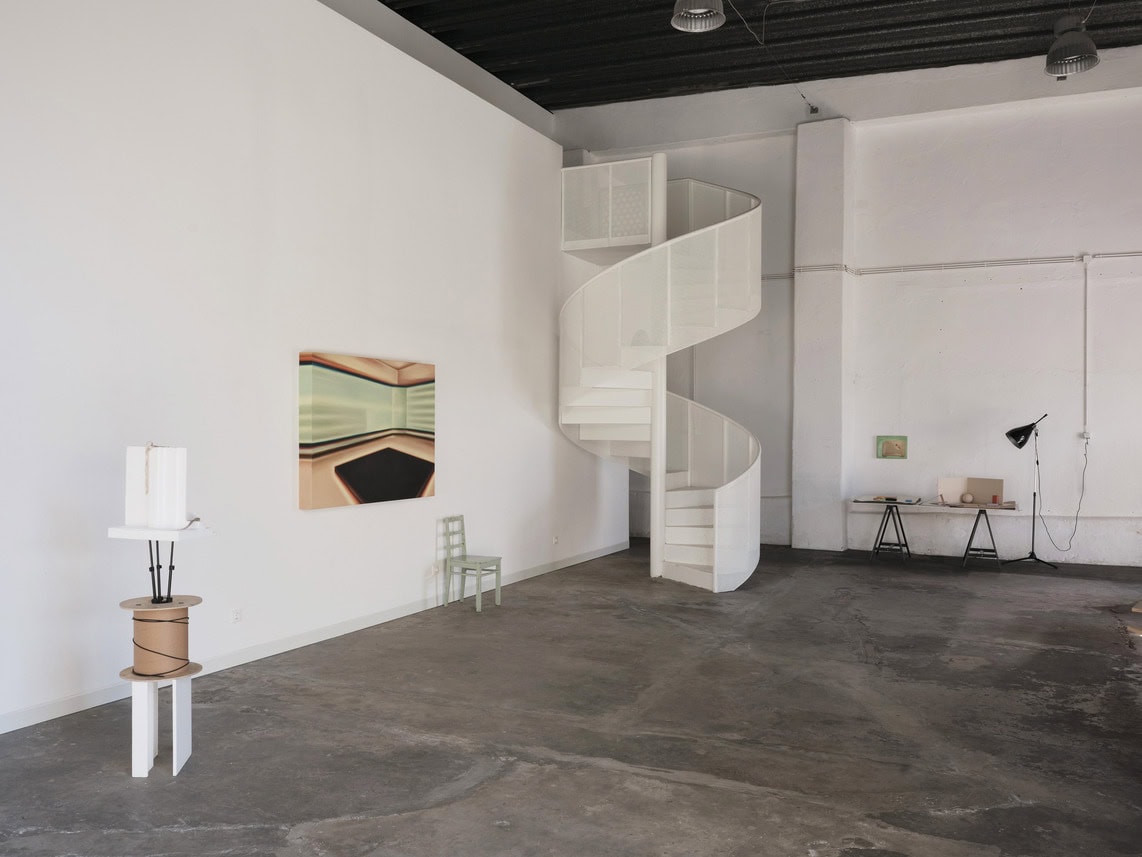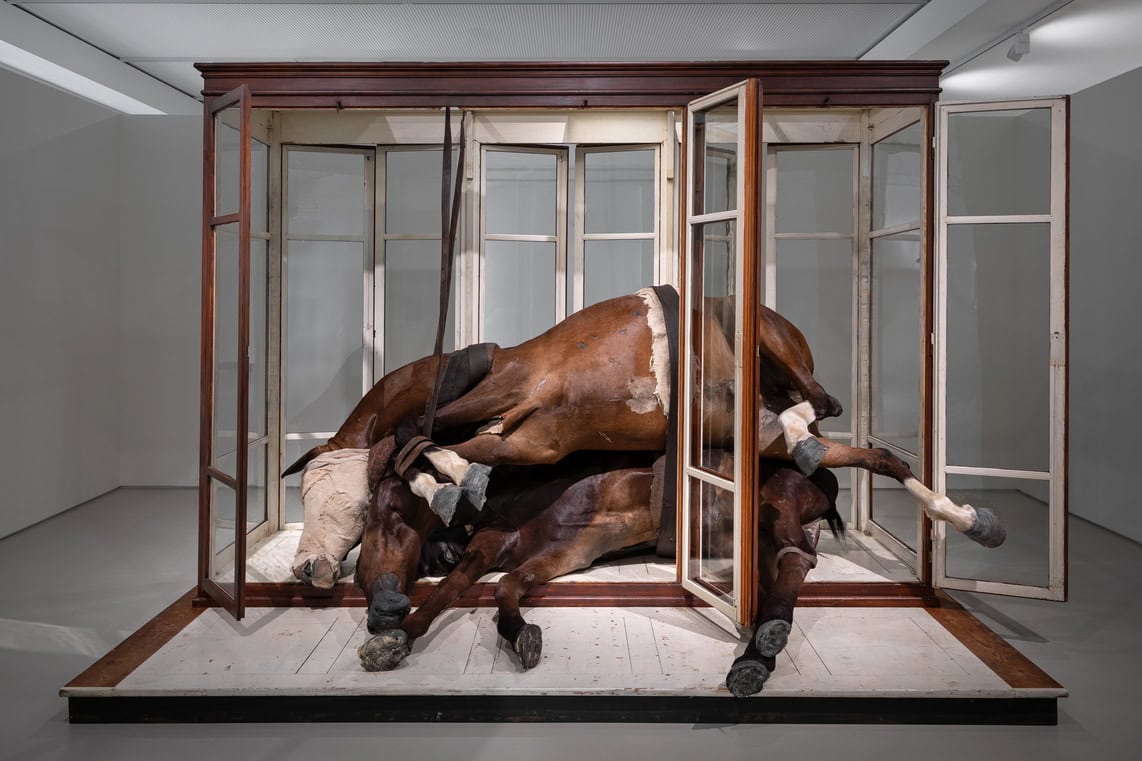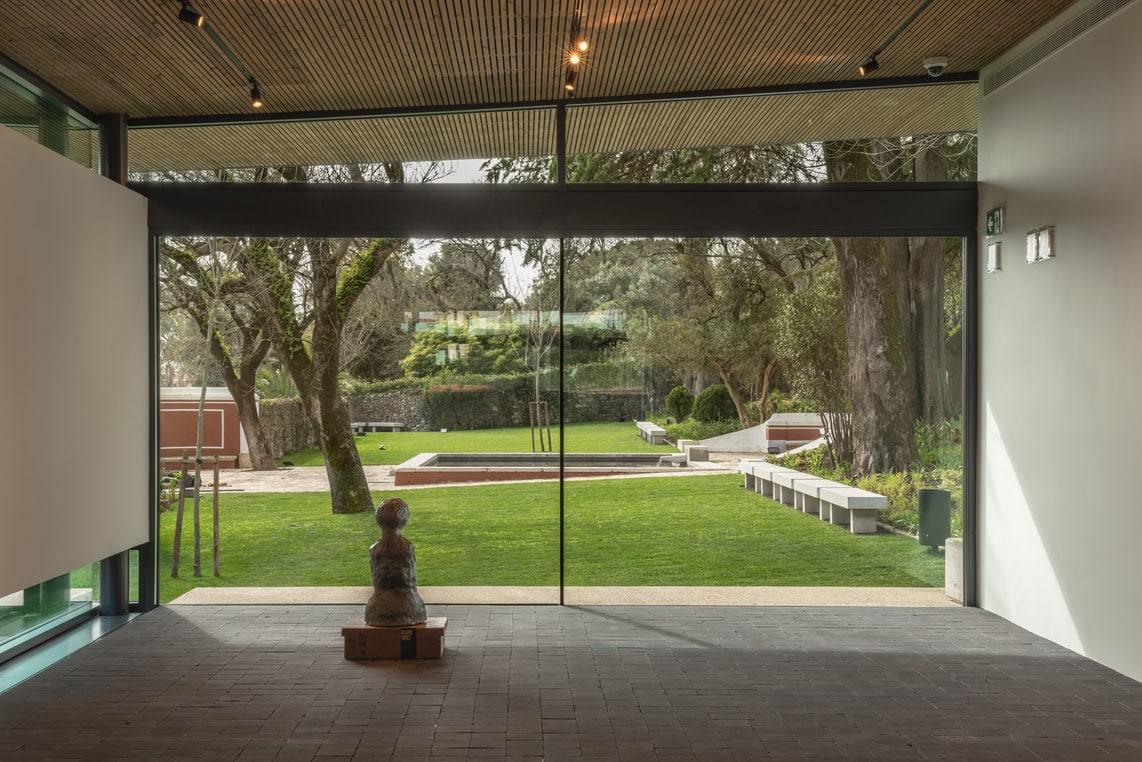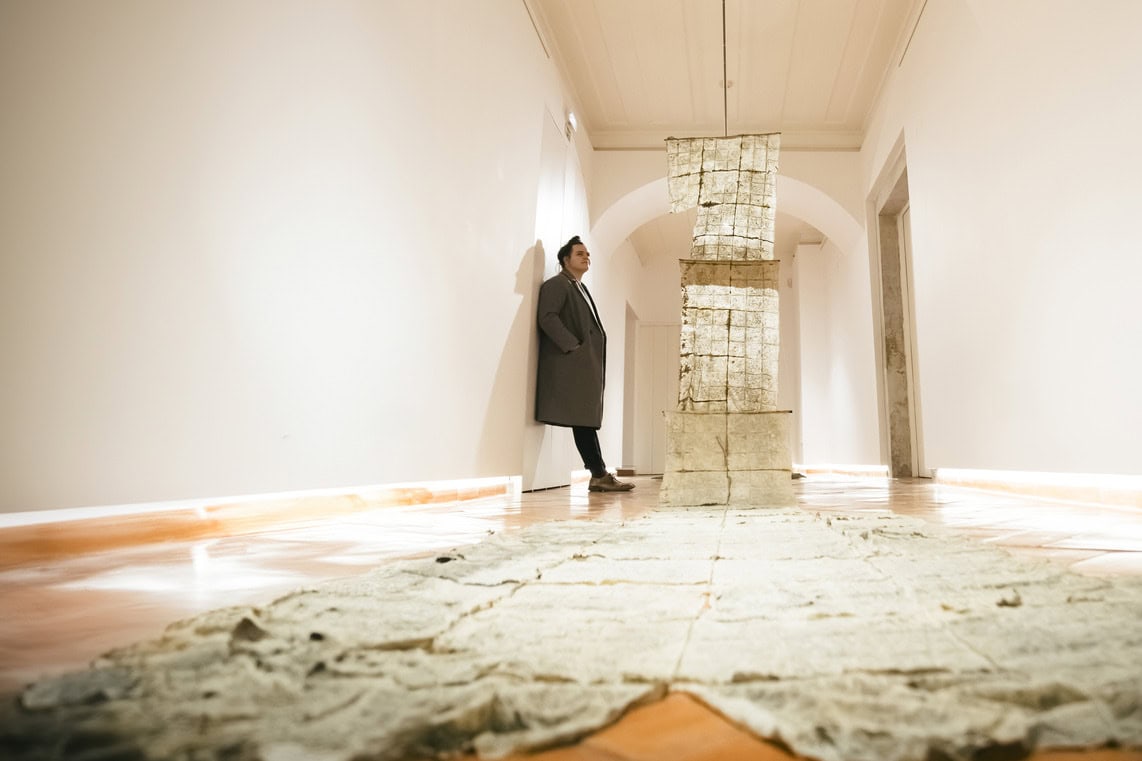Few artists enjoy the privilege of having 1500 of their own pieces gathered together in one single place. Having started working at the age of 15 and still going strong five decades later is a feat. Bearing one of the most important names in Portuguese contemporary art can also be something light-hearted. And Pedro Cabrita Reis is now presenting his Atelier with the liveliness of a 50-year career.
Some say retrospectives should only be for dead artists, and so Pedro Cabrita Reis’ exhibition at Lisbon’s Mitra de Marvila certainly does not fall into that mould. Whilst setting up the two-month exhibition, the artist was still churning out around twenty fresh works that were later added to the show.
“There’s an overlap between different studio levels,” Pedro Cabrita Reis explains. “There’s a studio which is an exhibition, with works from my personal collection. And I want to display them chaotically. Another level is the works I was making at the time when my assistants were assembling the exhibition. There is also the fact that the exhibition in itself is a great endeavour. I see it as such.” This UMBIGO interview took place over the phone, making it easy to imagine that, on the other end of the line, the artist was dressed in a suit, waistcoat and hat, smoking that cigar which is forever a feature of his dashing frame.
Large and small sculptures, paintings, photos, prints and drawings; anvils, hammers, doors and windows, ladders; photos of works completed around the world, maps, notes; tyres, bricks, showcases, stands and benches. It all comes together and spreads over no less than eight Mitra halls, a building donated by Lisbon’s Santa Casa da Misericórdia, whose roots date back to the 16th century. Within the high-ceilinged, fully refurbished premises, the only thing brightening the exhibition is the natural light from the internal courtyards. Visiting it on a Lisbon sunny day is even more delightful. Six people work in Pedro Cabrita Reis’ regular studio. Twenty-five professionals took part in this Atelier at Mitra, including assemblers, assistants, educators and others.
Nor is this a traditional retrospective, since Pedro Cabrita Reis is not trying to find an external, institutional perspective or a narrative for it. The works are displayed almost randomly, without any chronology or theme, according to what suits them best. They are not paired with a caption or curatorial text. Visitors are invited to take part in an informal, intimate and carefree experience. There is no clear indication of what is a completed work or what is experimentation. And this vulnerability of revealing the process – and not just the final, “perfect” work – makes this exhibition inspiring. Understanding that artists of Pedro Cabrita Reis’ calibre also make doodles, mistakes, erasings and redoings.
His work has always embraced industrial or architectural materials. The paintings where window panes act as frames are impressive; the doors serving as entrances and exits to nowhere; and the light sculptures, such as the one in front of MAAT, on the Tagus river. The experimentation and craftsmanship with which Pedro does his paintings is astounding. His endless and colourful self-portraits are hilarious. Canvases or photographs partially covered with swathes of paint are everywhere. Another beautiful sight is the numerous flower paintings that Pedro Cabrita started doing in his first studio, still at his parents’ house in Campo de Ourique, after his mother advised him to start with flowers if he was ever going to paint – they are just gorgeous!
“The most important factor in this process is to look at what you have done. Taking stock. This is really an exercise in introspection,” the 67-year-old Lisbon native says. “I am going through what I would call a sort of convulsion. I take this pulse, this energy, these moments that are interacting on all sides. And I’m certain that the way I look at it will shed light on whatever I decide to do next.”
Pedro Cabrita Reis’Atelier is on show at Mitra, in Marvila, Lisbon, until 28 July, from Thursday to Sundays, 2pm to 6pm.


Loop Lab Busan-7qk50.JPG)


